The Snow Leopard, also known as "Ghost of the Mountains," is a magnificent and elusive predator found in the high mountain ranges of Central and South Asia. One of the most sought-after sightings of the snow leopard is in Spiti Valley, Himachal Pradesh.
Spiti Valley is a high altitude desert region in Himachal Pradesh, nestled between the Himalayas and the Tibetan plateau. The area is known for its stunning landscapes, crystal clear blue skies, and its rare wildlife, particularly the snow leopard. The Spiti Valley is home to one of the highest densities of snow leopards in the world, making it a popular destination for wildlife enthusiasts and nature lovers alike.
The best time to see snow leopards in Spiti Valley is during the winter months, from December to February. This is because during this time, the snow leopards descend to lower altitudes in search of food, making it easier to spot them. However, the weather during this time can be extremely harsh, with temperatures dropping to as low as -30°C.
Another good time to spot snow leopards is during the early spring months of March and April, as this is the time when they start to move towards higher altitudes. However, the chances of spotting them during this time are slightly lower as they are more spread out and difficult to track.
It is important to note that snow leopard sightings cannot be guaranteed, as these are wild animals that move around their territory freely. Additionally, conservation efforts have made the snow leopards in Spiti Valley more elusive and wary of human presence. Therefore, it is recommended to go with experienced guides and conservation organizations who have a good understanding of the snow leopard's behavior and habitat.
Snow leopards are well adapted to the harsh conditions of the Himalayan region. They have thick fur and padded paws to help them survive in the extreme cold and rocky terrain. Snow leopards are solitary animals and are usually active at dawn and dusk. They are expert climbers and can jump up to six times their body length, allowing them to move effortlessly through the steep terrain of the mountains.
There are several organizations and tour operators that offer snow leopard sighting tours in Spiti Valley, Himachal Pradesh. Here are a few options:
Snow Leopard Adventures: This organization offers guided tours in partnership with the Snow Leopard Conservancy India Trust. They have experienced guides and offer a chance to observe snow leopards and other wildlife in their natural habitat. They also offer customized tours to suit individual preferences.
Himalayan Ecotourism: This organization offers sustainable tourism options and collaborates with local communities to promote conservation efforts. They offer guided snow leopard tours and focus on responsible tourism practices.
Wilderlust Expeditions: This organization offers a 10-day snow leopard tracking tour in Spiti Valley. They have experienced guides and offer comfortable accommodation options during the tour.
Spiti Ecosphere: This organization works closely with local communities to promote sustainable tourism and conservation efforts. They offer customized snow leopard tours, including homestays and cultural experiences.
When selecting a tour operator, it is important to ensure that they follow ethical and responsible tourism practices. It is recommended to choose a tour operator that works in partnership with local communities and has a good understanding of the local ecosystem. Additionally, it is important to follow guidelines for responsible wildlife watching, such as maintaining a safe distance from the animals and minimizing disturbance to their habitat.
The snow leopard is an apex predator, feeding primarily on Himalayan blue sheep, ibex, and marmots. However, due to poaching, habitat loss, and climate change, the snow leopard population has been declining rapidly. Spiti Valley is one of the few remaining areas in the world where snow leopards can be seen in their natural habitat.
To promote conservation efforts and eco-tourism, the government of Himachal Pradesh has implemented several initiatives to protect the snow leopard population in Spiti Valley. The Spiti Snow Leopard Conservation Project was launched in 2005, which aims to protect and conserve the snow leopard population in the region. The project also provides livelihood opportunities to the local communities by promoting sustainable tourism.
There are several places in Spiti Valley that are known for snow leopard sightings. Here are some of the main places:
Kibber Wildlife Sanctuary: This sanctuary is located in the high altitude desert of Spiti Valley and is home to a large population of snow leopards. It is one of the best places to spot snow leopards, particularly during the winter months.
Pin Valley National Park: This park is located in the cold desert region of Spiti Valley and is known for its diverse wildlife, including snow leopards. The park is also home to several endangered species, such as the Tibetan gazelle and snow cock.
Shego Wildlife Sanctuary: This sanctuary is located in the Pin Valley and is another popular spot for snow leopard sightings. It is also home to other rare wildlife species, such as the Himalayan wolf and red fox.
Tso Moriri Lake: This high altitude lake is located in the Changthang plateau of Spiti Valley and is surrounded by snow-capped mountains. It is a great place to spot snow leopards and other wildlife, such as the bar-headed goose and black-necked crane.
Tourists can participate in guided snow leopard tours organized by local conservation organizations, such as the Snow Leopard Conservancy India Trust. These tours offer a unique opportunity to observe these magnificent animals in their natural habitat. Apart from the snow leopard, the Spiti Valley is also home to other rare species like the Himalayan wolf, Tibetan gazelle, and Eurasian lynx.
Spiti Valley is located in the northern Indian state of Himachal Pradesh and is accessible by road. The nearest airport is in Bhuntar, which is about 240 km away from Spiti Valley. Here are the main modes of transportation to reach Spiti Valley:
By Road: The most popular way to reach Spiti Valley is by road. There are several routes to reach Spiti Valley, but the most commonly used route is via Manali. From Manali, one can take the Manali-Leh highway and cross the Rohtang Pass to enter Spiti Valley. The road from Manali to Spiti Valley is open from May to November, depending on the weather conditions.
By Bus: There are regular bus services from major cities in Himachal Pradesh, such as Shimla and Manali, to Spiti Valley. The buses are operated by the Himachal Pradesh Road Transport Corporation and offer a comfortable and affordable mode of transportation.
By Taxi: Taxis and private cars can be hired from major cities in Himachal Pradesh, such as Shimla and Manali, to reach Spiti Valley. This is a more convenient option for those who prefer to travel at their own pace and stop at various points of interest along the way.
It is important to note that the roads to Spiti Valley are often narrow and winding, and can be challenging to navigate for inexperienced drivers. It is recommended to hire an experienced driver or take a guided tour to ensure a safe and comfortable journey. Additionally, it is important to check the weather conditions before embarking on the journey, as heavy snowfall or landslides can disrupt travel plans.
Spiti Valley offers a unique experience of staying amidst the rugged mountains and stark beauty of the cold desert. Here are some of the places to stay in Spiti Valley:
Homestays: Staying in a homestay is a popular option in Spiti Valley, as it allows visitors to experience the local culture and way of life. Several local families offer homestay accommodations, where guests can stay in traditional houses made of mud and stone. Homestays provide basic amenities and offer a glimpse into the daily life of the locals.
Guesthouses: There are several guesthouses and lodges in Spiti Valley that offer comfortable accommodations. These guesthouses are usually run by local families and offer basic amenities such as hot water, electricity, and Wi-Fi.
Luxury Tents: Several luxury tented camps have also come up in Spiti Valley in recent years. These camps offer comfortable and luxurious accommodations amidst the rugged beauty of the mountains. They provide amenities such as attached bathrooms, hot water, and heating facilities.
Monasteries: Some of the monasteries in Spiti Valley offer accommodation for visitors. Staying in a monastery provides a unique spiritual experience and an opportunity to learn about the local Buddhist culture and traditions.
It is important to note that the accommodations in Spiti Valley are basic, and visitors should not expect luxury amenities. Additionally, it is recommended to book accommodations in advance, especially during the peak tourist season from May to October.
Spiti Valley in Himachal Pradesh is a unique destination that offers a chance to see one of the world's rarest and most elusive predators, the snow leopard. However, we must remember that we are guests in the snow leopard's habitat, and it is our responsibility to ensure that we leave minimal impact on the environment and promote responsible tourism to protect these beautiful creatures for future generations to enjoy.
Related Blogposts :










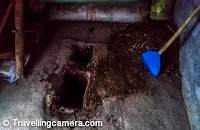

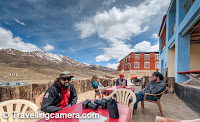
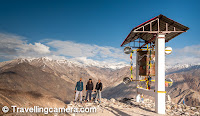
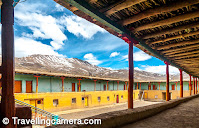


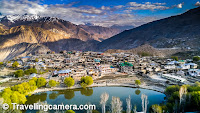

.jpg)
Comments